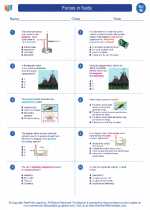Characteristics of Irregular Galaxies:
- They lack a defined shape or structure.
- They often have an irregular distribution of stars and gas.
- They can be small or large in size.
- They may contain young stars and regions of active star formation.
- Irregular galaxies may be influenced by gravitational interactions with other galaxies.
Types of Irregular Galaxies:
Irregular galaxies are generally categorized into two main types:
- Irregular Dwarf Galaxies: These are small, low-mass galaxies that often contain a high proportion of young stars. They may also have irregular shapes and show signs of ongoing star formation.
- Irregular Magellanic-Type Galaxies: These are larger, more massive galaxies that are characterized by their irregular shapes and structures. They are named after the Magellanic Clouds, which are prominent examples of this type of irregular galaxy.
Study Guide:
To understand irregular galaxies, it is important to focus on the following key points:
- Learn about the different types of irregular galaxies and their distinguishing features.
- Explore the processes of star formation and the presence of young stars in irregular galaxies.
- Understand the potential influence of gravitational interactions on the irregular shapes of these galaxies.
- Examine the role of irregular galaxies in the broader context of the universe and their contribution to our understanding of galactic evolution.
- Consider the ways in which irregular galaxies differ from other types of galaxies, such as spirals and ellipticals.






